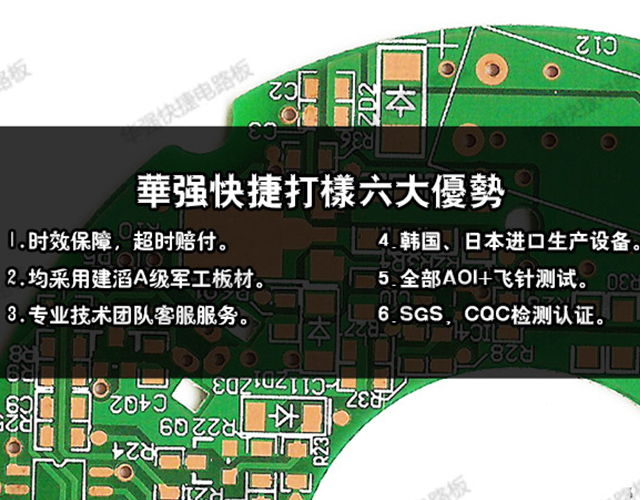1 Printed Circuit Board:
If it is heat transfer printing, laser printer must be used. If it is light sensitive, laser and ink jet can be used. It can be sprayed on a word jet printer. This is fast and accurate, but the laser effect is much better. Generally, when printing, we have to choose whether to print through holes or not. These attributes of the layer that needs to be printed also have an impact on the arrangement of the layers. The through hole layer must be at the top.
2
Cutting Copper Clad Sheet
Cut the copper clad board and make the whole process diagram of the circuit board with the photosensitive board. Copper clad boards, i.e. circuit boards with copper film on both sides, are cut to the size of circuit boards, not too large, in order to save materials. The waste edge corner produced in the cutting process is waste copper clad laminate, which belongs to dangerous waste. There are 900-045-49 waste circuit boards (including components, chips, plug-ins and stickers attached to waste circuit boards) of HW49 other wastes in the National Hazardous Waste List, but the list of exemption management of hazardous waste shows that the waste resin powder recovered from copper clad boards, printed circuit boards and circuit boards by crushing and sorting can be exempted. The exemption conditions are that the means of transport can meet the requirements of rain prevention and leakage prevention. Requirements for the prevention of rubbish scattering and disposal of rubbish landfills.
3
Pretreatment copper clad laminate: The oxide layer on the surface of the copper clad laminate is polished with fine sand paper to ensure that the carbon powder on the heat transfer paper can be firmly printed on the copper clad laminate when transferring the printed circuit board. The polished standard is that the surface of the laminate is bright and there is no obvious stain.
4
Transfer circuit board: cut the printed circuit board into appropriate size, paste one side of the printed circuit board on the copper clad board, put the copper clad board into the heat transfer machine after alignment, and ensure that the transfer paper is not misplaced when put in. Generally speaking, after 2-3 transfers, the printed circuit board can be firmly transferred on the copper clad board. The heat transfer machine has been preheated beforehand, the temperature is set at 160-200 degrees Celsius, because the temperature is very high, pay attention to safety in operation! Turn on the power supply of the heat transfer machine and set the temperature. After the machine is preheated, the improved copper clad sheet is inserted into the gap of the cots of the transfer machine, and the transfer is 1-10 times according to the situation (related to machine temperature, ink quality and other factors).
5
Corrosion circuit board, reflow soldering machine: First check whether the printed circuit board is complete, if there are a few places that have not been transferred can be repaired with black greasy pen. Then it can be corroded. When the copper film exposed on the circuit board is completely corroded, the circuit board will be removed from the corrosive solution and cleaned, so that a circuit board will be corroded. The composition of the corrosive solution is concentrated hydrochloric acid, concentrated peroxide and water, the ratio is 1:2:3. When preparing the corrosive solution, first put water, then add concentrated hydrochloric acid and concentrated peroxide. If the concentrated hydrochloric acid, concentrated peroxide or corrosive solution spills on the skin or clothing carelessly, it should be cleaned with clean water in time. Because of the use of strong corrosive solution, the operation must pay attention to safety!
6 PCB drilling: PCB is to insert electronic components, so it is necessary to drill PCB. Choose different drill pins according to the thickness of electronic component pins. When drilling with drilling rigs, the circuit board must be stable. The drilling speed can not be too slow. Please carefully watch the operation of operators. The efficiency of CNC drilling is not fixed, so it is difficult to answer such questions in a general way. How many holes can be drilled per hour depends on the type of drilling machine, the diameter of holes and the number of design holes of circuit board. Generally, the number of holes is the largest. Take Hitachi drilling machine for example, it can drill about 10,000-20,000 holes per hour and 3-6 holes per second in normal production. The drilling machine is the fastest when drilling 1.0mm holes. The higher the diameter is, the slower the drilling speed is. For example, when drilling 3.175mm positioning holes, it can drill less than one hole in a second and 2000 holes in an hour.
Pretreatment of PCB: After drilling, polish the ink coated on the PCB with fine sandpaper and clean the PCB with clean water. After the water is dried, we use loose perfume on the side of the line. In order to speed up the solidification of rosin, we use the hot-air fan to heat the circuit board, which only needs 2-3 minutes of rosin to solidify.
Welded electronic components: electronic components on the welded plate, electrified.
The above describes how to
make PCB circuit board process, the current traditional single-layer, double-layer, multi-layer circuit board process is very different.
